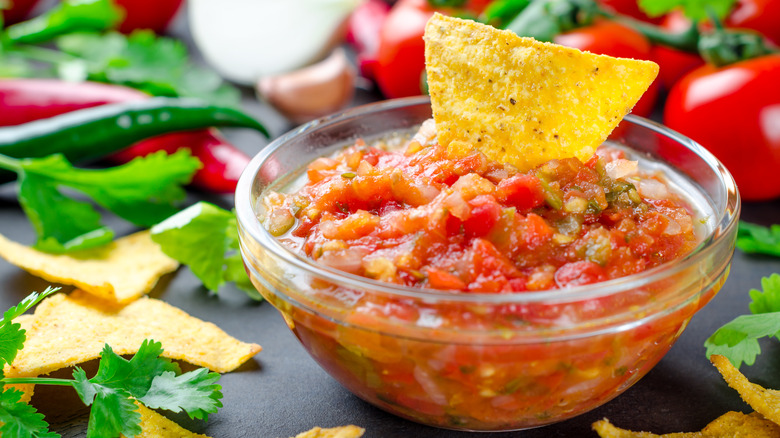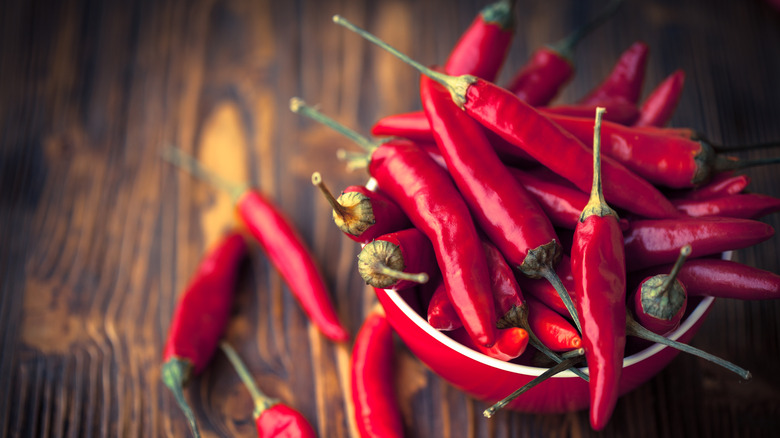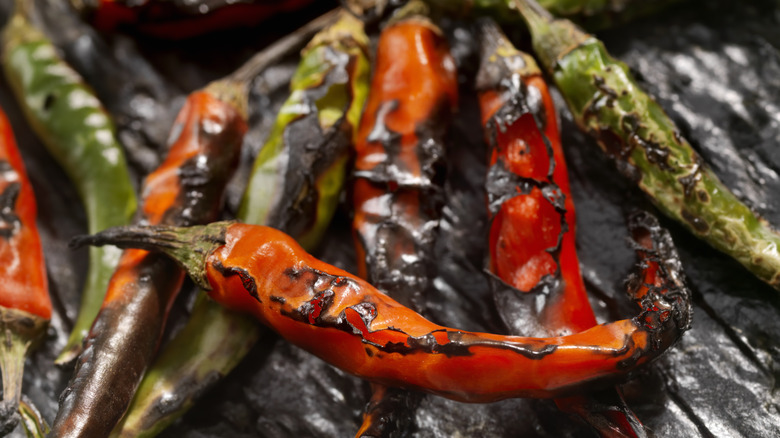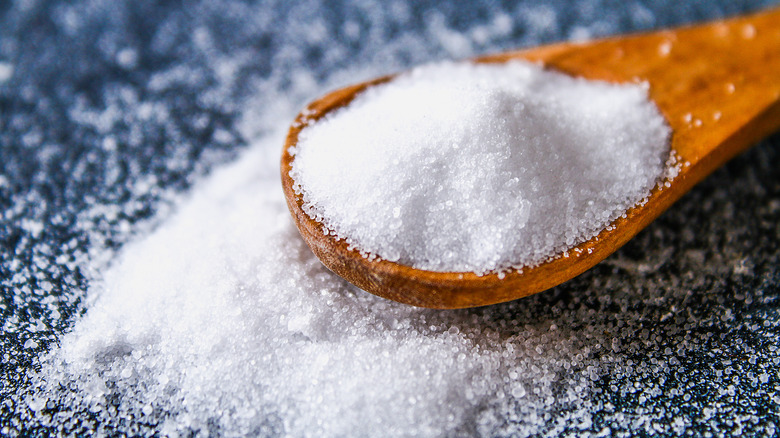A Mexican Chef's Top 3 Tips For Perfect Homemade Salsa Every Time
You might think making a batch of homemade salsa is as easy as throwing tomatoes in a blender with onions, peppers, and herbs like cilantro. While salsa is not an extremely difficult food to make from scratch at home, there are some essential steps if you want to perfect the dip every time you make it. Homemade salsa is delicious on its own with tortilla chips or as a tangy condiment on foods like eggs and tacos — so you don't want it to turn out too salty or too bland.
To help perfect your salsa making, we turned to an expert on the matter: Chef Roberto Santibañez. If you aren't familiar with Chef Santibañez, he's the author of several cookbooks, including "Truly Mexican: Essential Recipes and Techniques for Authentic Mexican Cooking," which was published in 2010. He's also the chef and owner of Mi Vida in Washington D.C. and Fonda, which has three eateries across New York City.
Use the right amount of chili peppers
Santibañez's first tip is all about the chilis, which are essential ingredients to give your salsa flavor and heat. "Generally chiles vary in heat level, so remember that the heat of them will dwindle in your salsa as time passes," he says. "If you're making it in advance, you can add extra chiles to compensate for this."
For reference, you should choose chilis based on how spicy you want the salsa to turn out. For milder salsa, use poblanos or green chili peppers. For a spicier salsa without too much heat, use a jalapeño pepper. And if you like spicy foods, double up on the jalapeños or use serrano peppers.
While Santibañez does not remove any of the veins surrounding the seeds in peppers when making salsa, it's important to note that they do increase the spice levels. So you can remove them as well as the seeds before you blend all of the ingredients if you want to tone down the heat level.
The temperature matters for serving
When making salsa, you can use raw ingredients or you can cook or roast them to bring out the spice and flavor. The option is up to your preferred cooking method, and how much time you have to make the salsa. Depending on which route you take, Santibañez says there's an essential step to make sure the temperature of the salsa is right before you serve it.
"If you're making and serving raw salsa, let it come up to room temperature first," he says. On the other hand, if you're making salsa with cooked ingredients, like roasted peppers, Santibañez says to give it time to cool down; you want your salsa to be at room temperature so you can taste all of the flavors.
Keep in mind that if you have leftover homemade salsa, it should be stored in the fridge so it doesn't spoil. It should last five to seven days when stored in the fridge.
Salt is an essential ingredient
Santibañez's final tip is all about the salt, which he says is "an essential and last component to a good batch of salsa" because it "will heighten any spicy, tart, tangy or sweet flavors you have involved." It makes sense because salt helps release flavors of all foods, including salsa ingredients like tomatoes, peppers, and fresh herbs.
How much salt should you use? "I like to say use it liberally but add it gradually, and always taste as you go," says Santibañez. For reference, 5 cups of salsa might only need a half teaspoon of Kosher salt, according to some recipes, but everyone has different salt tolerances. If you're serving it to guests who are concerned about the sodium, keep the salt to a minimum. Remember, you can't remove the salt once it's dissolved in the food, so start with a small amount and add more as you continue to make the salsa, like Santibañez recommends.



